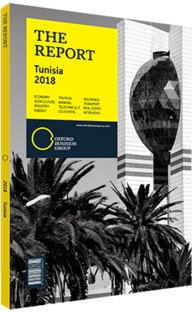Slim Feriani, Minister of Industry and Small and Medium-sized Enterprises: Interview

Interview: Slim Feriani, Minister of Industry and Small and Medium-sized Enterprises
What are Tunisia’s goals with respect to industrial zone development over the coming years?
SLIM FERIANI: Since 1973 Tunisia has established a total of 146 industrial zones. The goal is to create 69 more by 2020, of which 39 will be funded by the Industrial Land Agency, and the rest either by regional councils or municipalities. Our plan to create new industrial zones is aligned with the national strategies of decentralisation and investment in the development of the interior regions. Therefore, around 70% of the industrial zones will be located in those development areas, leaving the other 30% in the coastal areas. However, in order to encourage investors to locate their industrial activities in the interior of the country, adequate supporting infrastructure is needed to easily access the areas.
Increasing the number of industrial zones goes hand in hand with cluster development, and Tunisia already has an aerospace cluster in an industrial zone in Mghira, which serves as a one-stop-shop for investors. We also have a biotech cluster near Sidi Thabet, as well as the Tunisian Mechatronic Cluster near Sousse, among others. However, there is potential to multiply the clusters and we foresee 10 new ones being developed by 2020. Furthermore, establishing industrial zones that are specialised in one industry is advantageous for embryonic sectors that are still in their early stages.
How can Tunisia ensure that it remains globally competitive as an exporter?
FERIANI: Following the implementation of the law encouraging exports in 1972, the Tunisian industry has been integrated in global value chains. Initially, the country’s industrial exports were competitive due to their low-cost nature. However, nowadays there are multiple other low-cost production destinations in Asia, Latin America and Eastern Europe, so being inexpensive is not enough to remain relevant in global value chains.
Fortunately, Tunisia boasts other advantages, such as a strategic geographical location in the Mediterranean, a gateway between Africa, Europe and the Middle East, as well as a highly qualified workforce. In order to remain globally competitive, our industry needs to better leverage technology and develop sectoral expertise. Though Tunisian products are integrated in global value chains, there is a lack of awareness of the importance of our local industry. Therefore, marketing on a global level needs to be prioritised for Tunisian industrial products to become better recognised. People should be familiar with the dates from Kebili and Gafsa, the marble from Kef and Kassrine, the olive oil from Kairouan, and the gypsum – a soft sulphate mineral – from Tataouine.
What efforts are being made to modernise the sector and improve productivity?
FERIANI: A TD50m (€19.2m) public-private partnership project is currently under way to update the existing industrial infrastructure and increase productivity. The government is putting in 10-20% of the capital for the development project and the private sector is financing the rest. The project will have a multiplier effect, increasing creativity and innovation to lead the country into Industry 4.0. The technological transition of the industrial sector and the incorporation of more automated processes is necessary for Tunisian industry to remain competitive on a global scale.
Which sectors do you foresee increasing export revenues in the short to medium term?
FERIANI: In 2017 the Tunisian dinar depreciated 21% against the euro and 6% against the US dollar. Therefore, Tunisian products have become cheaper to buy internationally, which should translate to increased export revenues in the coming year. The textiles industry, a historically important sector in Tunisia, will continue contributing considerably to the trade balance sheet. In fact, textile comprises one-third of total manufacturing exports. The automotive and aerospace industries also have the infrastructure in place to increase exports.
You have reached the limit of premium articles you can view for free.
Choose from the options below to purchase print or digital editions of our Reports. You can also purchase a website subscription giving you unlimited access to all of our Reports online for 12 months.
If you have already purchased this Report or have a website subscription, please login to continue.

